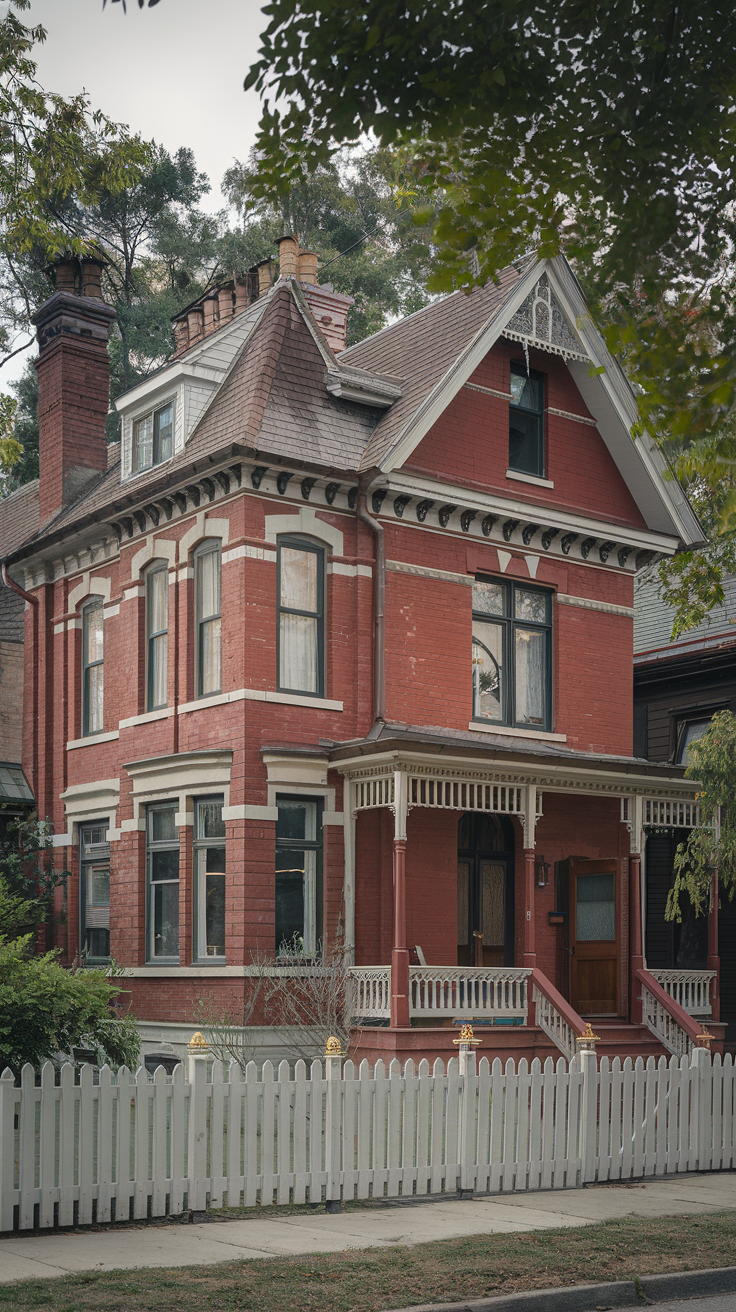11 Old Victorian Homes Interior Ideas to Bring History to Life
Victorian homes, with their ornate details and timeless charm, are a true testament to architectural grandeur. These homes, built between 1837 and 1901, are often characterized by their intricate woodwork, tall ceilings, and romantic design elements.
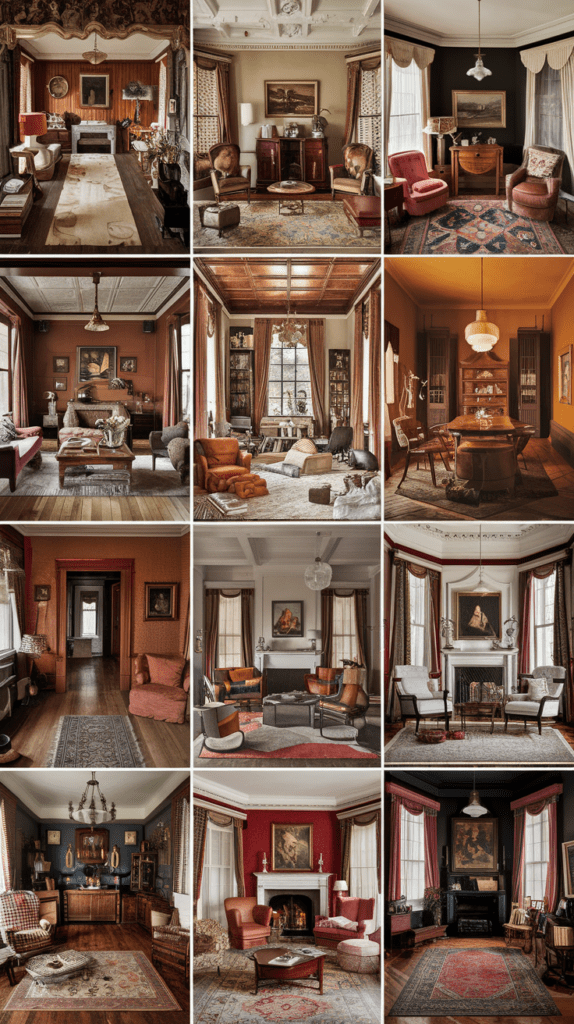
Bringing a Victorian home’s interior to life is about celebrating history while blending modern comforts.
Whether you’re restoring a grand mansion or revamping a smaller, cozy Victorian house, embracing its historic elements can provide both aesthetic beauty and a sense of authenticity.
Incorporating Victorian interior design can be a delicate balance of preserving the past while embracing the functionality needed for contemporary living.
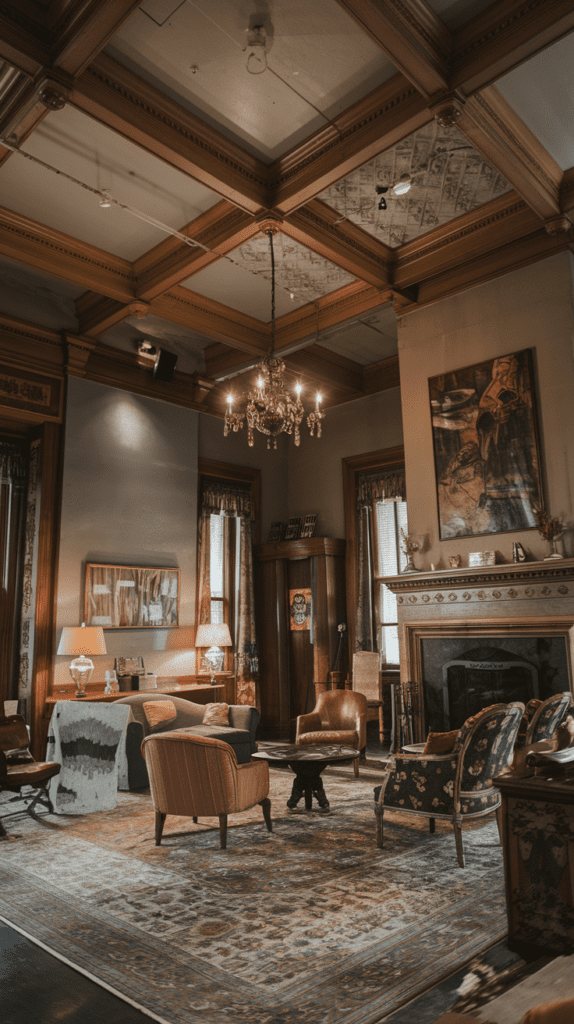
From classic Victorian furniture to rich color schemes and intricate architectural details, the following ideas will help you bring history into your home while making it suitable for modern-day living.
💥🎁 Christmas & Year-End Deals On Amazon !
Don't miss out on the best discounts and top-rated products available right now!
🛒 Shop Now and Save Big Today!*As an Amazon Associate, I earn from qualifying purchases.
1. Rich, Deep Color Palettes for Walls
Victorian homes often feature deep, opulent colors that create a dramatic and inviting atmosphere. To bring history to life, consider using rich, historical shades like burgundy, olive green, and navy blue. These colors were popular during the Victorian era and can be incorporated into modern-day spaces with an elegant touch.
For smaller rooms, you can opt for muted tones like dusty rose or soft greys, which offer a historic vibe while keeping the room feeling open and airy.
Table: Victorian Color Palette Comparison
| Victorian Color | Modern Equivalent | Description |
| Deep Burgundy | Rich Maroon | Adds warmth and drama to dining and living rooms. |
| Olive Green | Sage Green | Invites calm and sophistication into any space. |
| Navy Blue | Dark Teal | Creates a regal, vintage feel for large bedrooms. |
| Dusty Rose | Blush Pink | Soft, romantic tones that fit contemporary spaces. |
| Deep Charcoal | Slate Grey | For a timeless, classic background in any room. |
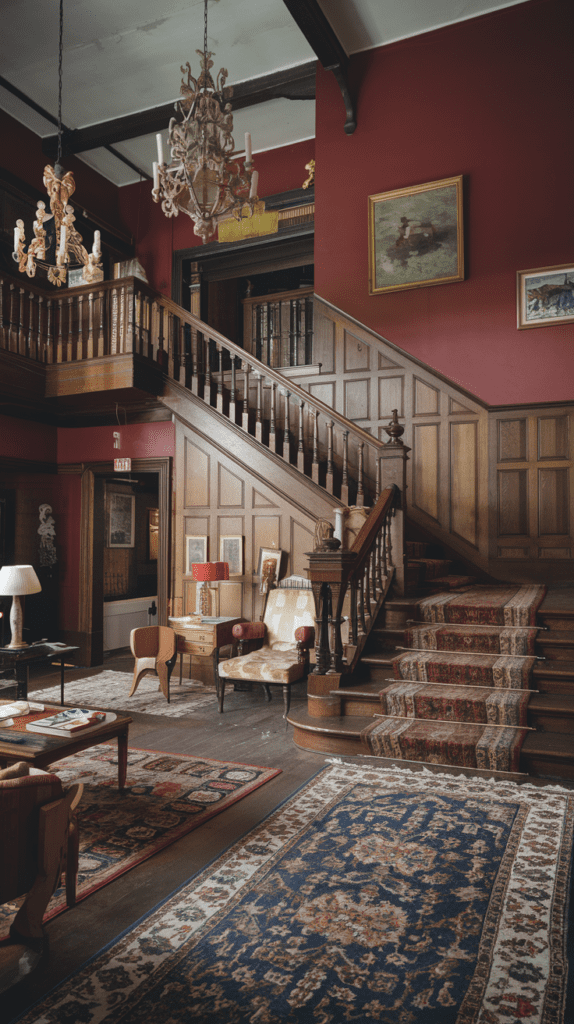
Historical wall patterns, such as damask or floral wallpapers, can also be applied in small doses, like in accent walls or focal points in living areas. Incorporating Victorian wall moldings and paneling can help retain the original character of the home, adding depth and texture to the walls.
2. Ornate Woodwork and Molding
One of the hallmark features of Victorian homes is their ornate woodwork. Whether it’s intricate crown molding, wainscoting, or elaborate door casings, incorporating these details is essential in bringing a Victorian home back to life. You can restore these features if they’re still intact or install reproductions that mirror the historic designs.
💥🎁 Christmas & Year-End Deals On Amazon !
Don't miss out on the best discounts and top-rated products available right now!
🛒 Shop Now and Save Big Today!*As an Amazon Associate, I earn from qualifying purchases.
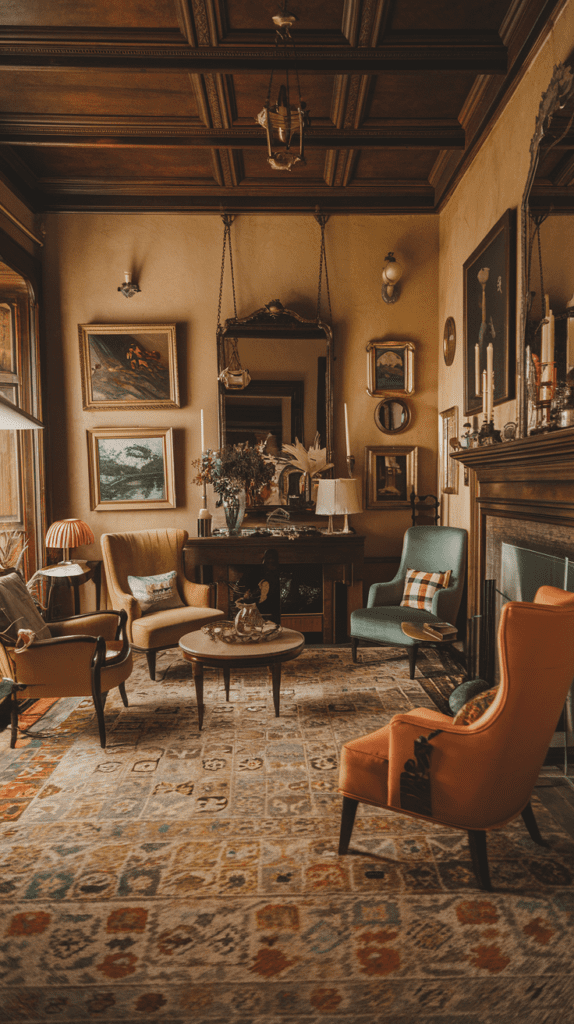
Victorian trim styles included patterns such as scrollwork, floral motifs, and chamfered corners, giving each room a distinguished look. Today, you can preserve the woodwork’s original tone by refinishing it or opt for contrasting modern paints to highlight the architecture.
Dark wood tones, such as mahogany and oak, are common in Victorian homes and can be applied to furniture and wood finishes throughout the house.
3. Antique and Vintage Furniture
Victorian furniture design is known for its attention to detail and elaborate forms. From carved wooden chairs to high-backed sofas, antique furnishings are ideal for recreating the feeling of a Victorian interior.
While modern reproductions can be purchased to capture the aesthetic, nothing compares to the authenticity of original Victorian furniture.
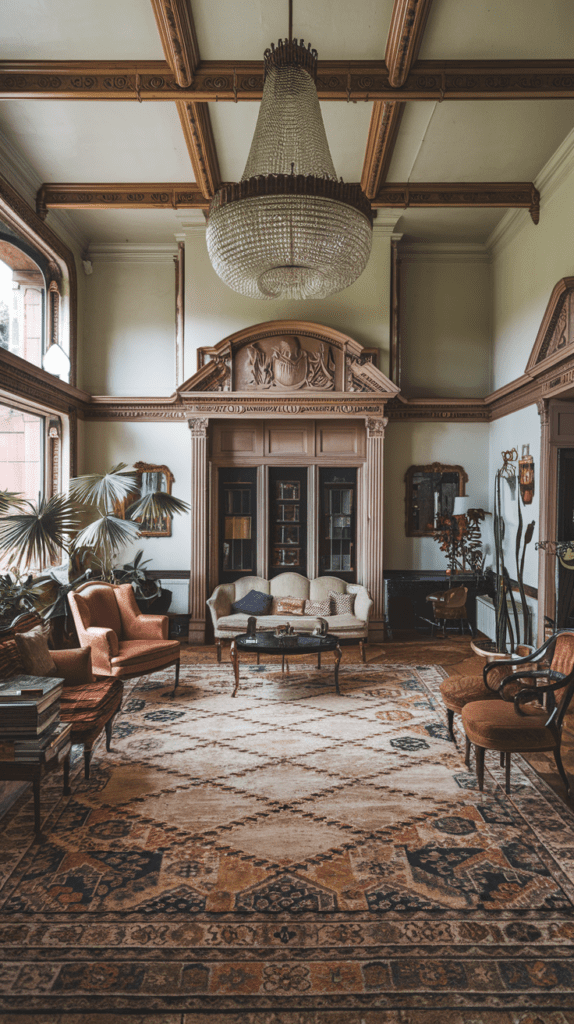
For an authentic feel, focus on pieces with deep upholstery, curved lines, and elaborate carvings. To achieve the Victorian look, look for furniture in rich, luxurious fabrics such as velvet, damask, or silk. Items like wooden chests, satinwood desks, and parlor sets can add that timeless touch to any room.
💥🎁 Christmas & Year-End Deals On Amazon !
Don't miss out on the best discounts and top-rated products available right now!
🛒 Shop Now and Save Big Today!*As an Amazon Associate, I earn from qualifying purchases.
Key Victorian furniture styles:
- Eastlake style: Known for its geometric patterns and flat carvings.
- Rococo Revival: Famous for elegant curves and gilded detailing.
- Gothic Revival: Incorporates pointed arches and intricate woodwork.
4. Elegant Draperies and Heavy Curtains
Victorian interiors often feature heavy, luxurious drapes made of velvet, brocade, or silk, which can evoke a sense of grandeur. Opt for floor-to-ceiling curtains that make windows look larger and frame them like works of art.
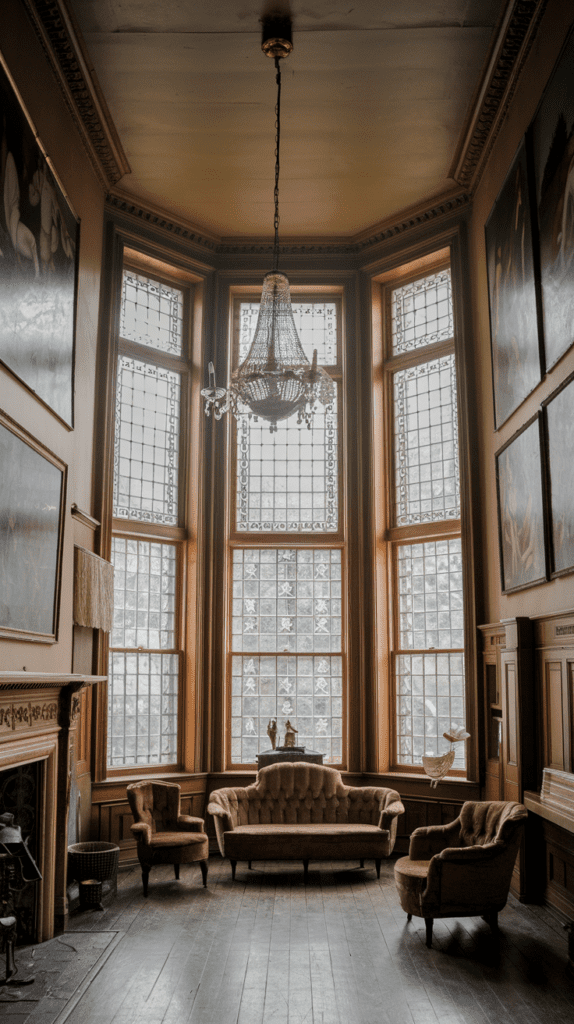
Rich, dark colors like deep burgundy or royal purple are historically accurate and can add an air of sophistication to living rooms or drawing rooms.
Victorian style drapery should also feature ornate tassels, tiebacks, and ruffled swags to add extra dimension and movement. For modern spaces, blend traditional fabrics with sheer curtains underneath to allow natural light to filter through.
5. Intricate Lighting Fixtures
Lighting plays a crucial role in creating an authentic Victorian atmosphere. Crystal chandeliers and gaslight-style fixtures are quintessential to the era, offering a touch of elegance.
💥🎁 Christmas & Year-End Deals On Amazon !
Don't miss out on the best discounts and top-rated products available right now!
🛒 Shop Now and Save Big Today!*As an Amazon Associate, I earn from qualifying purchases.
Chandeliers in crystal, bronze, and brass reflect the opulence of the time and can be installed in key spaces such as entrances, dining rooms, and grand parlors.
For a more modern approach, blend these traditional lighting elements with LED vintage-style Edison bulbs to keep your home energy-efficient without compromising the historic look. Wall sconces and floor lamps featuring brass bases or ornate ceramic designs add subtle touches of old-world charm.
6. Stained Glass Windows and Doors
One of the defining characteristics of many Victorian homes is their use of stained glass windows. These windows often feature floral motifs, geometric designs, or Victorian symbols that tell a story through color and light. If your Victorian home has original stained glass windows, it’s worth restoring them to preserve their beauty and historical significance.
If stained glass is not available, modern stained glass alternatives can be created by using translucent films or adhesive glass decals. These alternatives are easier to maintain and still provide the same historic visual impact.
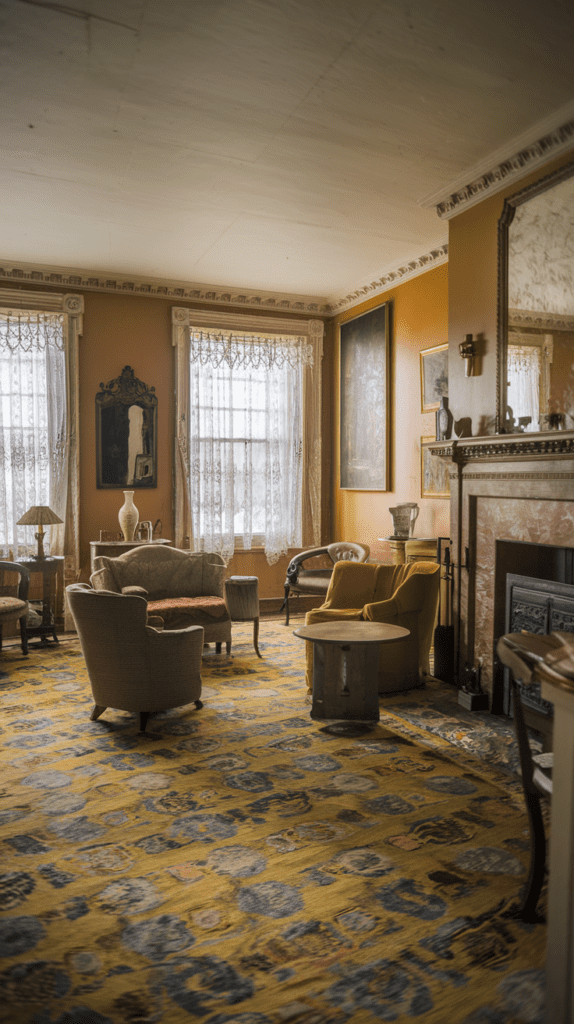
7. Classic Victorian Flooring Options
Floors in Victorian homes were often made of hardwood, parquet, or inlaid patterns. Today, restoring hardwood floors is a great way to bring a Victorian house back to life. Dark, polished wood with intricate inlay designs can give your floors the elegance and grandeur characteristic of the era.
💥🎁 Christmas & Year-End Deals On Amazon !
Don't miss out on the best discounts and top-rated products available right now!
🛒 Shop Now and Save Big Today!*As an Amazon Associate, I earn from qualifying purchases.
Alternatively, Victorian-inspired rugs can complement your hardwood floors. Choose oriental rugs or floral-patterned carpets in deep, rich hues to achieve that classic look. For homes with modern flooring, you can still evoke the Victorian style with luxurious area rugs or textured throws that mimic the patterns found in vintage flooring.

8. Fireplaces and Mantels as Focal Points
In Victorian homes, fireplaces served as the heart of a room. A grand marble or stone fireplace with an ornate mantel was often the central feature of a drawing room or parlor. Even if your home uses modern heating systems, you can still create a focal point by restoring or recreating a fireplace.
Choose Victorian-style mantels made of carved wood or marble to add historical character. To create a cozy, authentic ambiance, incorporate candles, period-style accessories, and vintage brass fireplace tools as accents around the fireplace.
Table: Fireplace Mantel Design Options
| Fireplace Style | Description | Materials |
| Victorian Marble Mantel | Ornate carvings with deep, rich tones. | Marble, Wood |
| Wooden Carved Mantel | Features intricate woodwork and delicate detailing. | Oak, Mahogany |
| Cast Iron Fireplace | Simple yet robust, often paired with a black finish. | Cast Iron, Steel |
9. Period-Appropriate Accessories
Accessorizing your home is where the magic happens. To capture the essence of Victorian design, incorporate period-appropriate accessories like candle holders, brass clocks, framed oil paintings, and antique vases. Items like figurines, bronze sculptures, and elegant candelabras can offer subtle yet meaningful nods to Victorian luxury.
💥🎁 Christmas & Year-End Deals On Amazon !
Don't miss out on the best discounts and top-rated products available right now!
🛒 Shop Now and Save Big Today!*As an Amazon Associate, I earn from qualifying purchases.
For a more authentic touch, consider filling bookshelves with vintage books, preferably bound in leather or cloth with gilded spines. Framed mirrors with intricate, gold-painted frames can also reflect the opulence of the era.
10. Luxurious Bedding and Upholstery
To truly replicate the Victorian style, luxurious bedding is a must. Choose rich velvet bedspreads, intricate lace pillowcases, and decorative throw blankets to bring a touch of historical elegance to your bedrooms. Dark, heavy drapes can complement the bedding, evoking the same sense of comfort and refinement that Victorians cherished in their private quarters.
For upholstered furniture, opt for deep, plush materials like velvet or brocade. These luxurious fabrics, when combined with carved wood frames and cushioned accents, can transform any room into a Victorian haven.
11. Victorian-Inspired Wall Art and Sculptures
Wall art was a crucial aspect of Victorian interior design. Large, ornate oil paintings featuring landscapes, family portraits, or still-life subjects are ideal for achieving a historical feel. Carved wood panels or architectural sculptures can also be hung to add texture and historical authenticity to walls.
Additionally, consider hanging antique-style mirrors with intricate wood carvings around doorways or above fireplaces to complete your room’s design.
💥🎁 Christmas & Year-End Deals On Amazon !
Don't miss out on the best discounts and top-rated products available right now!
🛒 Shop Now and Save Big Today!*As an Amazon Associate, I earn from qualifying purchases.
Incorporating these Victorian interior ideas into your home can create a space that feels rich with history yet comfortable for modern living.
From deep color palettes and luxurious textiles to antique furniture and ornate woodwork, these elements will transform your Victorian home into a historical masterpiece that tells a story with every detail.
